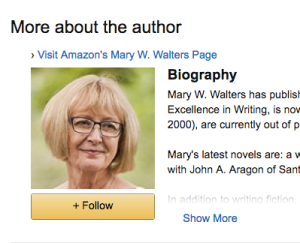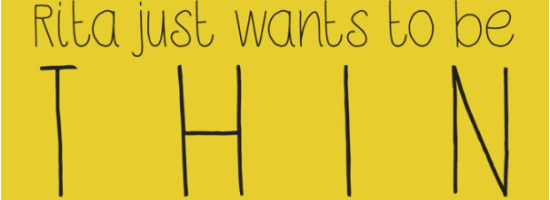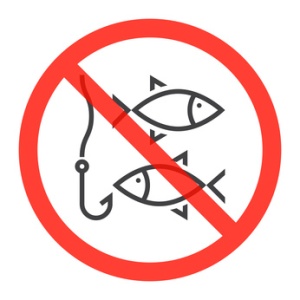
My Facebook Author Profile page
Let’s Get Visible (III)
How to Sell Your Book No Matter Who Published It (6)
.
If you are not on Facebook, you probably have a lot of good reasons not to be there, maybe relating to privacy issues or concerns about wasting valuable (writing) time. However, if you are not on Facebook, you can’t build yourself an author platform on Facebook, so you might as well just skip this post and wait until the next one comes along.
Personal Facebook Pages: Friends and Followers
If you are one of the more than 1 billion people who are on Facebook, that means that you already have a personal Facebook page or “profile.” People can ask to “friend” you on your Facebook profile and you can agree by “friending” them in return.
Most of us have the privacy settings on our personal Facebook pages set so that only our Facebook friends can see our posts. However, if you set the privacy on your personal Facebook page to “Public” under Settings, you can be “followed” as well as “friended.”
Anyone on Facebook can “follow” you if your default privacy setting is “public”: they don’t need to ask you for permission first. If you decline friend requests, the people who sent them can still follow you – unless you block them. Your friends are also automatically also your followers. Followers can see anything you post with a security setting of “Public,” but unless they are also friends, they can’t see any individual posts that you set for broadcast only to “Friends.” (You have the option of “Friends” only or “Public” publication for every post you create, no matter what your permanent/default setting is.)
Some authors have only a personal Facebook profile. They prefer to let anyone who wants to follow them see almost everything they post, and they use “Public” as their default setting. They do this as a favour to readers who want to know everything they can about their favourite authors. They think it feels more personal. And they also do it because more people are likely to follow your personal Facebook page than they are to “like” a professional or business page.
I, on the other hand, prefer to have a professional Facebook page in addition to my personal Facebook page. On my personal page, I have set my privacy so that only people I have “friended” can see my posts. Even though I have 500 plus friends on Facebook, and I don’t actually know quite a few of them in real life, I have vetted every single person I have agreed to friend. (A lot of them are writers, from all over the world. I love it.) I’ve made sure they are a real person, and that if they don’t know me directly in real life, they have solid friendships with one or more of my other Facebook friends. I delete them – poof, they’re gone – if it turns out that I don’t like or trust them.
Professional Facebook Pages: Where you can get “Liked”
A professional Facebook page is the platform on Facebook that is used by businesses, public figures, organizations and other entities that are not individuals… including many writers, such as me. Facebook pages offer different options than do personal pages: e.g., templates, links to websites, selling platforms, etc. Facebook business/professional pages don’t acquire “friends”; they accumulate “likes” instead. When someone likes your Facebook writer page, you will be notified, and when you post something on your writer page, it will appear in the timelines/newsfeeds of all people who liked your page. (You can also “promote” your page or one of your posts by spending money. We’ll get into that later, when we’re talking about paid advertising.)
Note: If you don’t have a personal Facebook page, you won’t be able to set up a business/professional page.
My Mary W. Walters Writer page is public. Anyone can see it, and anyone can like it. This means that I’m careful of what I say on my writer page. I don’t talk politics or religion or (usually) sex. I don’t want to lose potential readers of my books just because our political opinions don’t mesh, nor do I want to attract sock puppets.
I do talk about politics, religion and many other things on my personal Facebook page, but I don’t push my writing there: I am there to exchange thoughts with friends, tell them news from my life, vent my spleen, or make them laugh. I always hope that my personal Facebook page is interesting enough that everyone who sees it will want to read my books as well, but I don’t use it as a deliberate sales vehicle.
I do repost items from my writer page to my personal page that I consider “objective” information rather than sales pitches: such as notices about readings and talks I am giving, and announcements of blog posts such as this one. But most of what I post on Facebook in any given week (which is way too much) goes out only to my “friends” via my personal Facebook page.
For me, this arrangement is easier than trying to remember to set every post I make to “friends” or “public” visibility. Also, when people have “liked” my professional writer Facebook page, they are essentially requesting information about Mary the Writer, so I don’t feel badly when I tell them what I’m doing with my writing, or about writing-related achievements, or any accolades my books have received.
How to Set Up An Author Page on Facebook
On the right hand side of the blue bar across the top of your personal Facebook page, you will see a little arrow pointing down. Click on it, choose “Create Page,” and then follow the instructions. You will need to choose what kind of Page to have: whether a “business or company” page (probably the best choice if you want to sell books directly from Facebook, which I don’t), a “brand or product page” (might be good if you have only one book or series to sell), an “entertainment” page (I’d guess that spoken word poets looking for gigs might want to check this out, although I haven’t), or a “public profile” page. I chose the latter. I like the sound of it. :)
Once you’ve chosen your page category, you can indicate your particular area of focus. “Writer” is one of the options on the “public profile” page, and probably also on Entertainment and Company pages.
Facebook is very user-friendly when it comes to setting up a page, so just follow the directions. If you get stuck, type in your questions under “Help,” and for further guidance check out other writers’ Facebook pages to see what they are including and posting. There is an option under the three dots below your cover photo to see how the page looks to visitors, which I find handy.
Maintaining Your Facebook Writer’s Page
Facebook will send a friendly reminder to you when you haven’t posted on your author’s page for a while, but I try to remember to post something there at least once a week. It may be an article from elsewhere about writing or about one of my favourite writers, or it may be a notice about a new blog post I’ve done or a reading I’m about to do. I have my Goodreads profile set up to repost notices automatically to my writer’s page on Facebook about books I’ve read, etc.
I think of my Facebook writer’s page the way I do about my website: it is there if anyone is looking for me, and it is important to be there in case anyone does look for me. If they do, and if they “like” my page, they deserve to hear interesting things from me from time to time: about my writing, or about writing in general. They can find links to my books and my website and other online things they might want to check out about me from that page, and I let them know when there are special discounts happening on my books on Amazon or elsewhere.
However, I don’t think of my Facebook writer page as a page where I am likely to attract new buyers for my books. People don’t like being harangued about how they should buy my books, so I don’t harangue them, and haranguing doesn’t work anyway (as I have said before. Several times). So the page is just part of the wallpaper.
You should keep in mind when you are building your Facebook author page that it’s not likely to be much of a marketing vehicle. The wallpaper should be hung straight, and look nice and tidy, but don’t bother making it flash in the dark or animate it or do anything else that is going to waste your precious time unnecessarily.
P.S. If you like MY Facebook Writer’s Page and then ask me to like YOUR Facebook writer’s page, I will, and that will help us both. You can also add your Facebook author page link to the comments section below so other readers can follow your page and you can follow theirs, and so on….
____________________
As always I encourage readers to share their experiences and knowledge about book promotion through the comments section below. If your comment isn’t posted immediately, be patient. I review them first, to avoid spammers, and (believe it or not) I’m not always online.
.



 (Let’s get visible, Part II)
(Let’s get visible, Part II)

 In future sections of this guide, I am going to talk to you about setting up a Twitter account, a Facebook page, an AuthorCentral page on Amazon, a Goodreads author profile, and other kinds of social media contact pages. I am also going to discuss the merits of establishing and / or maintaining a blog.
In future sections of this guide, I am going to talk to you about setting up a Twitter account, a Facebook page, an AuthorCentral page on Amazon, a Goodreads author profile, and other kinds of social media contact pages. I am also going to discuss the merits of establishing and / or maintaining a blog.
 Since most writers know nothing about book promotion and the very words “social media” strike fear into their hearts, such online offers are tempting. If you are so tempted, I urge you to resist. The very nature of these book promotion companies is a “one size fits all” approach. How many of them are offering to actually read your book, and saying that they will promote it only if they really, really love it? None that I’ve seen.* And since none of their services are custom-tailored, but are instead intended for the masses, how can they possibly sell your book?
Since most writers know nothing about book promotion and the very words “social media” strike fear into their hearts, such online offers are tempting. If you are so tempted, I urge you to resist. The very nature of these book promotion companies is a “one size fits all” approach. How many of them are offering to actually read your book, and saying that they will promote it only if they really, really love it? None that I’ve seen.* And since none of their services are custom-tailored, but are instead intended for the masses, how can they possibly sell your book? You Wrote It? You Sell It!
You Wrote It? You Sell It!
You must be logged in to post a comment.